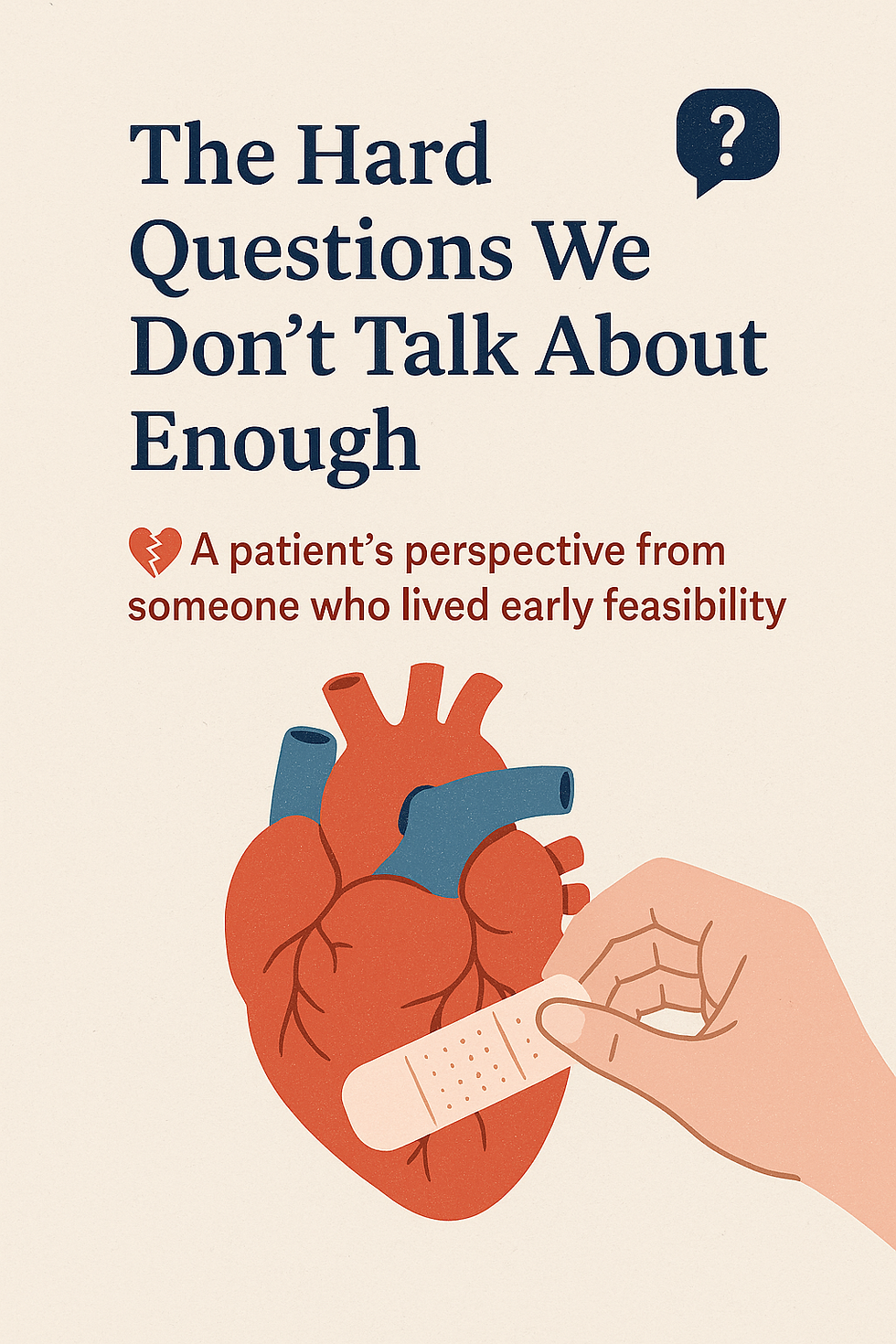The Heart Surgery I Couldn’t Have – And the One That Saved Me ❤️🩹🥑
- maryrburrell
- May 1
- 3 min read
When traditional surgery failed me, innovation gave me a second chance
I’ve always known I wasn’t a candidate for open-heart surgery. My body—my lungs, my heart function, my overall health—just couldn’t take it. So even though I needed my tricuspid valve replaced, traditional surgery was never an option. And honestly? That scared me. Because if not surgery… then what?
For me, it wasn’t just uncertainty—it was death, unless a miracle showed up.
I didn’t need another maybe. I needed a miracle.That’s when I found out about transcatheter therapies—less invasive, more targeted, and designed for patients like me.
No breaking bones. No surgical trauma just to reach the valve. No long, brutal recovery. Just a catheter, a tiny device, and a medical team willing to believe I was still worth saving.
🫀 1. No Open-Heart Surgery Required
Transcatheter procedures are minimally invasive—they use a catheter (often through a vein in the leg or neck) to deliver a new valve to the heart. No chest cracking. No open-heart surgery.
🫀 2. Shorter Hospital Stays
Most patients are home within 1–3 days, sometimes even sooner. That’s a huge shift from traditional open-heart recovery that can take weeks in the hospital and months at home.
🫀 3. Ideal for High-Risk Patients
These procedures are lifesaving options for people who are too high-risk for surgery—older adults, those with lung disease, weakened hearts, or other conditions that make surgery dangerous.
🫀 4. Real Results, Backed by Data
It’s not just hope—it’s proof. Studies show that transcatheter valve replacements improve symptoms, reduce hospitalizations, and increase overall quality of life.
🫀 5. Done While You’re Awake (Sometimes!)
Yep, you read that right—many are done with conscious sedation, meaning no breathing tube, no deep anesthesia. You’re relaxed, but awake and breathing on your own.
🫀 6. Tricuspid Is the New Frontier
TTVR (Transcatheter Tricuspid Valve Replacement) is one of the most exciting breakthroughs for patients with tricuspid regurgitation—finally giving the “forgotten valve” the attention it deserves.
🫀 7. Smaller Incision = Less Trauma
These procedures typically need only a tiny incision (5–10 mm), often in the groin. That means less pain, lower risk of infection, and a much smoother recovery.
🫀 8. A Growing List of Life-Saving Devices
There are now multiple FDA-approved devices for aortic and mitral valve repair and replacement. Tricuspid options are catching up, with several in clinical trials or special access programs.
🫀 9. Patient Stories Are Driving Change
The more we share our stories, the more providers, policymakers, and the public take notice. Patient voices are paving the way for better access—especially for those who’ve been overlooked.

Educational diagram of a transcatheter device
If you’re a patient (or an advocate like me), it’s worth knowing these names—because each company has its own clinical trials, patient support programs, and initiatives focused on education and awareness. That matters when you’re navigating complex care options.
Not everyone qualifies for these procedures, but for those of us who do? It can mean the difference between fading… and fighting back.
I wish more people knew these options existed. If you or someone you love is facing valve disease and traditional surgery isn’t an option, ask your doctor about transcatheter therapies.
Advocate for yourself. It could change everything.
And if you’ve had one of these procedures—or you’re considering one—reach out. Let’s talk. You’re not alone. ❤️🩹🥑



Comments